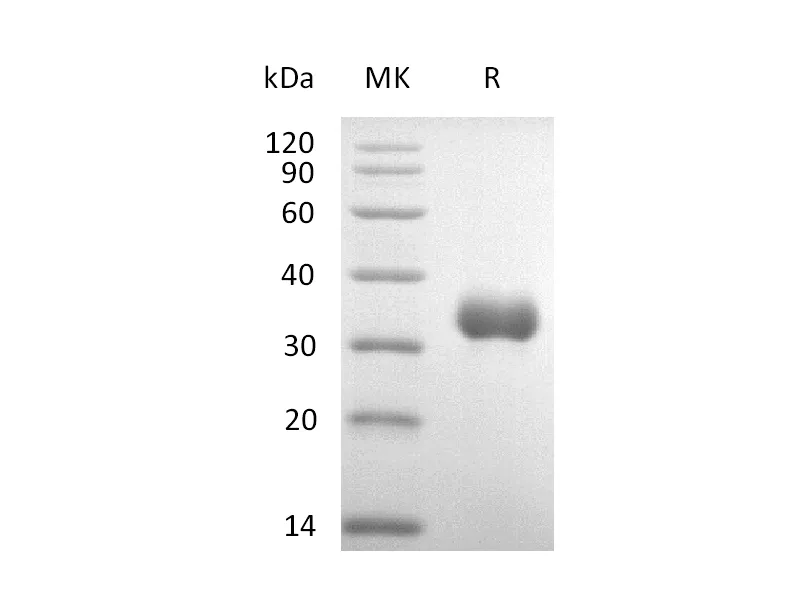
Size1:10μg price1:$136
Size2:50μg price2:$378
Size3:500μg price3:$1890
| Name | Recombinant Human IGFBP-7 (C-6His) |
| Purity | Greater than 95% as determined by reducing SDS-PAGE |
| Endotoxin level | <1 EU/µg as determined by LAL test. |
| Construction | Recombinant Human Insulin-like Growth Factor-binding Protein 7 is produced by our Mammalian expression system and the target gene encoding Ser27-Leu282 is expressed with a 6His tag at the C-terminus. |
| Accession # | Q16270 |
| Host | Human Cells |
| Species | Human |
| Predicted Molecular Mass | 27.3 KDa |
| Buffer | Lyophilized from a 0.2 μm filtered solution of 20mM Tris-HCl, 300mM NaCl, pH 8.0. |
| Form | Lyophilized |
| Shipping | The product is shipped at ambient temperature.Upon receipt, store it immediately at the temperature listed below. |
| Stability&Storage | Lyophilized protein should be stored at ≤ -20°C, stable for one year after receipt. Reconstituted protein solution can be stored at 2-8°C for 2-7 days. Aliquots of reconstituted samples are stable at ≤ -20°C for 3 months. |
| Reconstitution | Always centrifuge tubes before opening.Do not mix by vortex or pipetting.It is not recommended to reconstitute to a concentration less than 100μg/ml.Dissolve the lyophilized protein in distilled water.Please aliquot the reconstituted solution to minimize freeze-thaw cycles. |
Alternative Names
Insulin-like growth factor-binding protein 7;IGFBP7;IGF-binding protein 7;IGFBP-rP1;MAC25 protein;Tumor-derived adhesion factor;TAF
Background
Insulin-like growth factor-binding protein 7(IGFBP-7) is a secreted glycosylated protein that contains three protein domain modules. IGFBP7 contains an N-terminal IGFBP domain, followed by a Kazal-type serine proteinase inhibitor domain and a C-terminal immunoglobulin-like C2-type domain. Human and mouse IGFBP7 are highly homologous and share 94% aa sequence identity. It is expressed in many normal tissues and in cancer cells. It is abundantly expressed in high endothelial venules (HEVs) of blood vessels in the secondary lymphoid tissues. It binds IGF and insulin with very low affinity and has been shown to enhance the mitogenic actions of IGF and insulin. IGFBP7 also has IGF/insulin-independent activities. It interacts with heparan sulfate proteoglycans, type IV collagen, and specific chemokines. It supports weak cell adhesion, promotes cell spreading on type IV collagen, and stimulates the production of the potent vasodilator PGI2. It modulates tumor cell growth and has also been implicated in angiogenesis.
Note
For Research Use Only , Not for Diagnostic Use.
